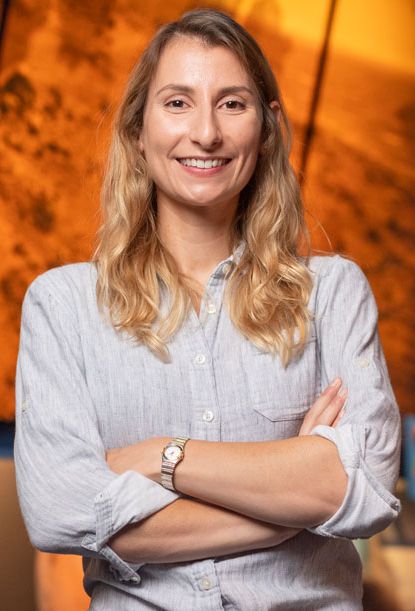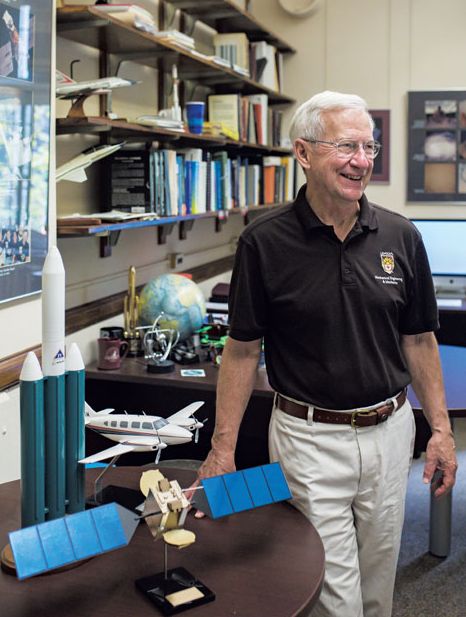She remembers really wanting to be an astronaut.
Mechanical engineering alum Pam Fusek ’13 isn’t sure where the fascination came from; maybe it was all the books her parents read to her before she was old enough to have a say in the subject. Maybe it was all the books about space she plowed through when she was old enough to entertain herself. Wherever it came from, the obsession was complete by the fifth grade. That’s when she had to dress up as a historical figure and present to her class. She chose Russian cosmonaut Valentina Tereshkova, the first woman to go into space.
“I thought she was the biggest, baddest figure in history,” says Fusek, now 27.
The astronaut dream eventually faded—she’s not a huge fan of small spaces—but the allure of outer space remained. And a high school physics class hinted at another way to get there.
“I loved the way you could characterize the world and everything around us with equations. My high school self thought that was the coolest thing, turning something complicated into something understandable. I thought, ‘Oh yeah, this is it.’ From there, it wasn’t even a question of whether I would do mechanical engineering. No other class had piqued my interest like that, so I just followed it.”
A mission, perhaps, like the very real one Fusek would work on for 15 months as a systems engineer for NASA’s Jet Propulsion Laboratory in Pasadena, California. A mission called the Europa Clipper.
Read the full story about Fusek's work at JPL and her role on the Europa Clipper mission, in a feature story by Christine Fennessy, staff writer for the P.C. Rossin College of Engineering and Applied Science, available in the Lehigh University News Center.


